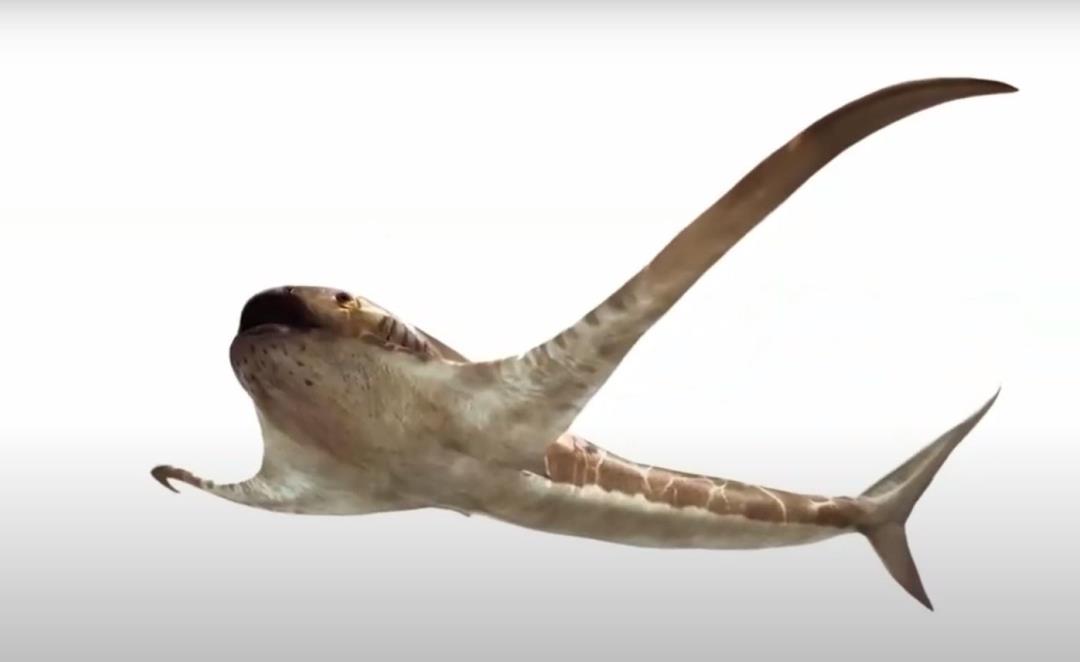
(Newser)
– It swam slowly through the seas with a tail fin similar to that of modern sharks and side fins that extended outward like the wings of modern birds. No wonder, then, that this strange creature, which died in present-day Mexico about 93 million years ago, has been christened the eagle shark. It is especially suitable because the pectoral fins of this specimen — the first of its kind to be found — gave it a wingspan of about 6.2 feet, which eclipsed its length by 5.4 feet, according to the lead researcher. Romain Vullo of the National Center for Scientific Research in France. and the University of Rennes explains Live Science. A quarry worker discovered the fossilized skeleton and soft tissue imprints of the shark on a limestone slab in the state of Nuevo León, which was then part of a vast inland sea, in 2012. Aquilolamna milarcae, or eagle shark from the Museum of the Milarca, where the fossil will be displayed.
It would have had “a unique chimerical appearance,” Vullo says. But even though it is classified as a shark, the eagle shark looks more like some kind of ray than a large target. The fossil shows no signs of pelvic or dorsal fins, or teeth. “This previously unknown body plan represents an unexpected evolutionary experimentation with underwater flight between sharks, more than 30 million years before the rise of manta rays and devils,” says the study published Thursday in Science. For Live Science, modern plankton-eating elasmobranchs (fish with cartilage skeletons) form two groups: those with a traditional shark body and those with a flatter body, such as rays. The eagle shark is not an ancestor of rays, but it was probably a wide-mouthed filter feeder that dined on plankton, as rays do today. Vullo explains to AFP that the rays replaced the eagle sharks after the disappearance of most species about 66 million years ago. (Read more discovery stories.)